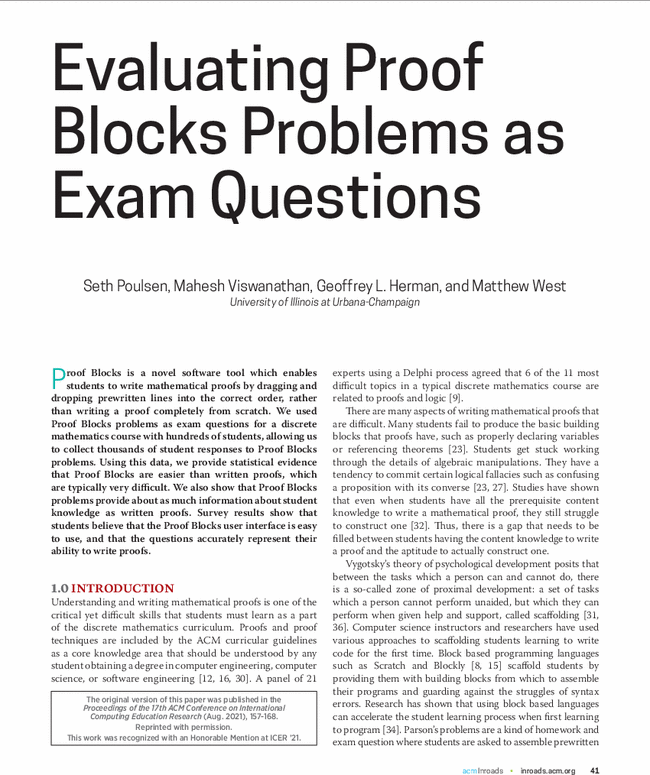Cited By
View all- Wu ZSmith DMonga MLonati VBarendsen ESheard JPaterson J(2024)Evaluating Micro Parsons Problems as Exam QuestionsProceedings of the 2024 on Innovation and Technology in Computer Science Education V. 110.1145/3649217.3653583(674-680)Online publication date: 3-Jul-2024



